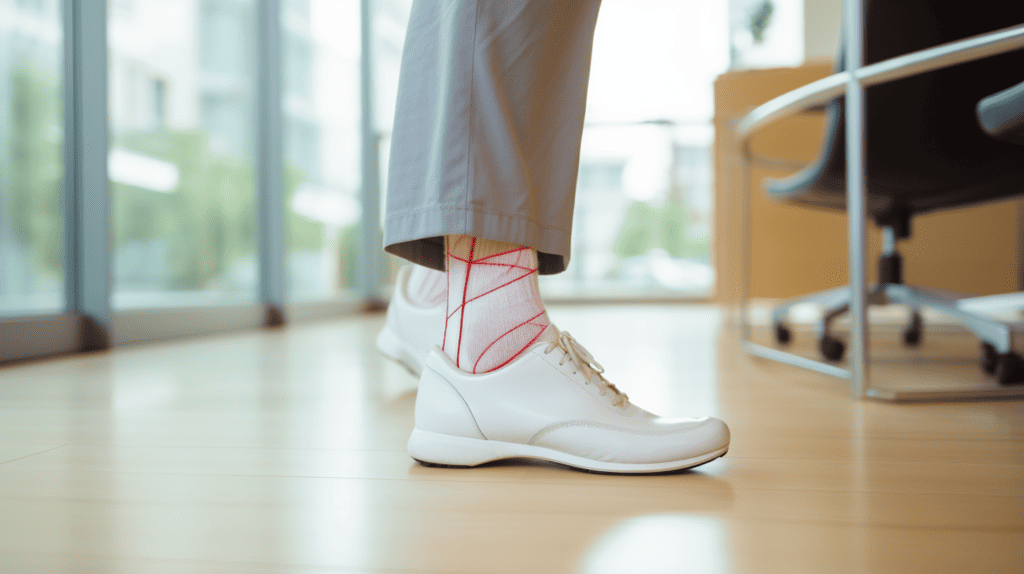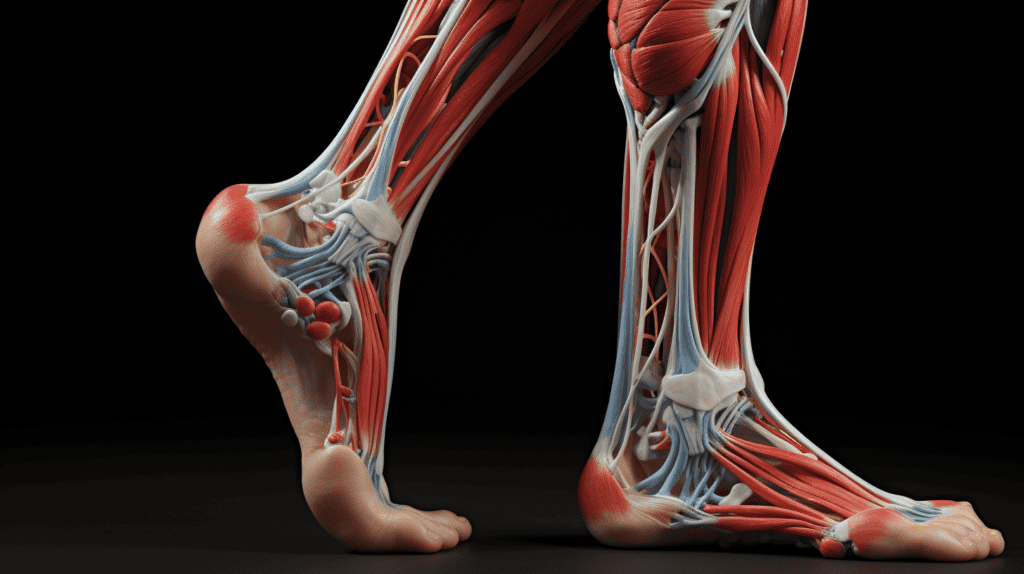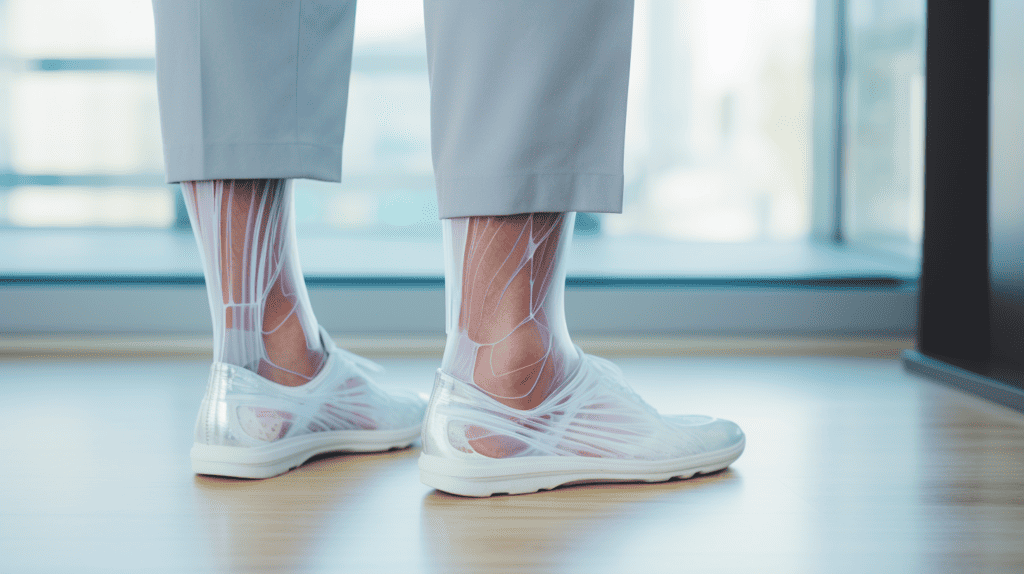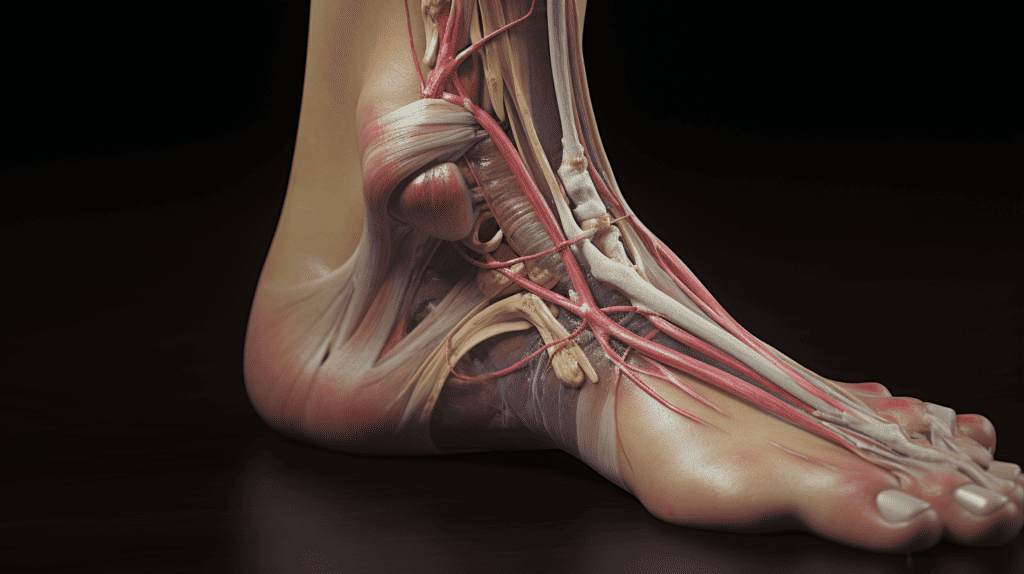
Are you experiencing discomfort or pain in your ankle? Do you have trouble walking or participating in physical activities due to ankle problems? If so, you may benefit from seeing an ankle specialist in Singapore. These medical professionals are trained to diagnose and treat a range of ankle conditions, from sprains and strains to fractures and arthritis.
There are several highly qualified ankle specialists in Singapore who can provide you with the care you need. Dr. Ong Kee Leong, for example, is a fellowship-trained orthopaedic surgeon who specializes in foot and ankle surgeries, arthroscopic sports surgery, and the management of sports-related injuries.
Another option is Dr. Derek Park, a senior consultant orthopaedic surgeon who holds a dual-fellowship in Orthopaedic Trauma Surgery and Foot & Ankle Surgery. Dr. Kannan Kaliyaperumal is another recognized orthopaedic doctor and ankle specialist in Singapore with experience treating knee, foot, and ankle conditions.
No matter which ankle specialist you choose to see, you can rest assured that you will receive top-notch care for your ankle condition.
With their expertise and experience, these specialists can help you manage your pain, improve your mobility, and get back to doing the activities you love. So if you’re struggling with ankle problems, don’t hesitate to seek out the help of an ankle specialist in Singapore today.
Understanding the Ankle: Bones, Joints, and Muscles

You might not think about it often, but your ankles are essential to your everyday life. They bear your body weight and allow you to walk, run, jump, and engage in a variety of activities. Understanding the anatomy of your ankle can help you better appreciate how it works and how to care for it.
Bones
Your ankle is made up of three bones: the tibia, fibula, and talus. The tibia is the larger bone in your lower leg, and it sits on top of the talus bone, which is located in your foot. The fibula is a smaller bone that runs alongside the tibia and helps stabilize the ankle joint.
Joints
The ankle joint is a complex joint that connects the bones of your lower leg to your foot. It is made up of several smaller joints, including the subtalar joint, which allows for side-to-side movement, and the talocrural joint, which allows for up-and-down movement.
Muscles
Several muscles and tendons surround the ankle joint, helping to move and stabilize it. The muscles of the ankle are divided into two groups: the extrinsic muscles, which originate in the leg and cross the ankle joint, and the intrinsic muscles, which originate in the foot.
The extrinsic muscles include the gastrocnemius, soleus, and tibialis posterior muscles, which are responsible for plantarflexion (pointing the foot downward), dorsiflexion (lifting the foot upward), and inversion (turning the foot inward), respectively. The intrinsic muscles of the foot include the flexor hallucis brevis, abductor hallucis, and adductor hallucis muscles, which help control the movement of the toes.
Conclusion
Now that you have a basic understanding of the bones, joints, and muscles of the ankle, you can appreciate the complexity of this important joint. Taking care of your ankles through proper footwear, stretching, and strengthening exercises can help prevent injuries and keep you active and healthy.
Common Ankle Conditions in Singapore

If you’re experiencing ankle pain, you’re not alone. Many people in Singapore suffer from a variety of ankle conditions. In this section, we’ll cover some of the most common ankle conditions that ankle specialists in Singapore treat.
Sprains
Ankle sprains are one of the most common ankle injuries. They occur when the ligaments in the ankle are stretched or torn. This can happen when you twist your ankle or land on it wrong. Symptoms of an ankle sprain include pain, swelling, and bruising. Ankle specialists in Singapore can help you manage your symptoms and prevent further injury.
Fractures
An ankle fracture occurs when one or more of the bones in the ankle are broken. This can happen as a result of a fall or other trauma. Symptoms of an ankle fracture include pain, swelling, and bruising. Ankle specialists in Singapore can help you manage your symptoms and provide treatment options.
Bunions
Bunions are a common foot condition that can cause pain and discomfort. They occur when the joint at the base of the big toe becomes enlarged and pushes the toe towards the other toes. Ankle specialists in Singapore can provide treatment options to help alleviate your symptoms.
Heel Pain
Heel pain is a common foot condition that can be caused by a variety of factors, including plantar fasciitis, heel spurs, and Achilles tendonitis. Ankle specialists in Singapore can help diagnose the cause of your heel pain and provide treatment options to help alleviate your symptoms.
Instability
Ankle instability occurs when the ligaments in the ankle are weakened or stretched. This can cause the ankle to feel unstable or wobbly. Ankle specialists in Singapore can help you manage your symptoms and provide treatment options to help improve ankle stability.
Arthritis
Arthritis is a common condition that can affect the ankle joint. It can cause pain, swelling, and stiffness in the ankle. Ankle specialists in Singapore can help diagnose the type of arthritis you have and provide treatment options to help manage your symptoms.
Flat Feet
Flat feet occur when the arches of the feet collapse, causing the entire foot to touch the ground. This can cause pain and discomfort in the ankle and other parts of the foot. Ankle specialists in Singapore can provide treatment options to help alleviate your symptoms.
Ankle specialists in Singapore are highly trained and experienced in treating a variety of ankle conditions. If you’re experiencing ankle pain or discomfort, don’t hesitate to seek help from an ankle specialist. They can help you manage your symptoms and provide treatment options to help you get back on your feet.
Symptoms and Severity of Ankle Conditions

You may experience a range of symptoms if you have an ankle condition, including pain, swelling, and numbness. The severity of your symptoms can vary depending on the type and severity of your condition.
Pain is a common symptom of ankle conditions. You may experience pain when you walk, stand, or move your ankle in certain ways. The pain may be sharp or dull, and it may be constant or intermittent. In some cases, the pain may be severe enough to limit your ability to perform daily activities.
Swelling is another common symptom of ankle conditions. Your ankle may become swollen due to inflammation or fluid buildup. The swelling may be mild or severe, and it may be accompanied by redness or warmth around the ankle.
Numbness is less common but can occur in some cases. You may feel a tingling or numbness sensation in your ankle or foot. This may be due to nerve damage or compression.
The severity of your symptoms can vary depending on the type and severity of your ankle condition. For example, a mild ankle sprain may only cause mild pain and swelling, while a severe ankle sprain or fracture may cause severe pain and swelling, as well as difficulty walking or standing.
It is important to seek medical attention if you experience any of these symptoms. An ankle specialist in Singapore can diagnose your condition and recommend appropriate treatment options to help alleviate your symptoms and improve your quality of life.
Ankle Specialist: Role and Expertise

Are you experiencing ankle pain or discomfort? If so, you may want to consider visiting an ankle specialist in Singapore. Ankle specialists are medical doctors who specialize in diagnosing and treating ankle-related conditions and injuries. They have undergone extensive training and education to become experts in their field.
Ankle specialists are also known as orthopaedic surgeons, and they are registered with the Singapore Medical Council and the Royal College of Surgeons. They have the knowledge and expertise to provide a comprehensive evaluation of your ankle condition and recommend the best course of treatment.
During your initial consultation with an ankle specialist, they will conduct a thorough physical examination to assess your ankle’s range of motion, strength, and stability. They may also order diagnostic tests such as X-rays or an MRI scan to further evaluate your condition.
Ankle specialists are trained to treat a wide range of ankle conditions, including ankle sprains, fractures, and arthritis. They also specialize in treating sports-related injuries such as Achilles tendonitis and ankle instability.
Ankle specialists may recommend non-surgical treatments such as physical therapy, medication, or orthotics. In some cases, surgery may be necessary to repair or reconstruct damaged ankle ligaments or tendons.
In conclusion, if you are experiencing ankle pain or discomfort, it is essential to seek the advice of an ankle specialist in Singapore. They have the expertise and knowledge to provide an accurate diagnosis and recommend the best course of treatment for your specific condition.
Diagnostic Procedures for Ankle Conditions

If you are experiencing any discomfort or pain in your ankle, it is important to seek medical attention from an ankle specialist in Singapore. Ankle specialists will first conduct a thorough physical examination to diagnose your condition. They may also order diagnostic procedures to confirm the diagnosis and determine the severity of your condition.
Symptoms
Common symptoms of ankle conditions include pain, swelling, stiffness, and difficulty walking or bearing weight on the affected ankle. In some cases, you may also experience instability or a feeling of giving way in the ankle.
Diagnosis
To diagnose ankle conditions accurately, ankle specialists may order various diagnostic procedures, including:
- X-rays: These can help to detect bone fractures, dislocations, or other abnormalities in the bones of the ankle.
- Magnetic Resonance Imaging (MRI): This imaging test uses a magnetic field and radio waves to create detailed images of the soft tissues in the ankle, such as the ligaments and tendons. An MRI can help to detect tears or other damage to these structures.
- Computerized Tomography (CT) scan: This imaging test uses X-rays to create detailed cross-sectional images of the ankle. A CT scan can help to detect fractures or other abnormalities that may not be visible on an X-ray.
- Ultrasound: This imaging test uses high-frequency sound waves to create images of the ankle. An ultrasound can help to detect soft tissue injuries, such as sprains or tears in the ligaments or tendons.
Depending on your specific symptoms and medical history, your ankle specialist may order one or more of these diagnostic procedures to accurately diagnose your condition and develop an appropriate treatment plan.
By undergoing diagnostic procedures, ankle specialists in Singapore can determine the root cause of your ankle condition and provide you with the best possible treatment options. Don’t hesitate to seek medical attention if you are experiencing any discomfort or pain in your ankle.
Non-Surgical Treatment Options

If you are suffering from an ankle condition, you may be wondering if there are any non-surgical treatment options available. The good news is that there are several non-surgical treatment options that can help alleviate pain and promote healing.
One of the most common non-surgical treatment options is physical therapy. Ankle specialists in Singapore often incorporate physical therapy as a key part of treating ankle conditions such as ankle sprains, plantar fasciitis, as well as Achilles tendonitis.
In addition to ankle conditions, physical therapy is also used to treat knee, hip, arm, spine, and shoulder conditions, amongst others. Physical therapy can help improve range of motion, strengthen muscles, and reduce pain.
Another non-surgical treatment option is the use of orthotics. Orthotics are custom-made shoe inserts that can help correct foot and ankle problems, such as flat feet or overpronation. They can also help alleviate pain caused by conditions such as plantar fasciitis or Achilles tendonitis.
If you are experiencing pain, your ankle specialist in Singapore may recommend the use of pain relief medication. There are several types of pain relief medication available, including over-the-counter pain relievers such as ibuprofen or acetaminophen, as well as prescription pain medication. It is important to follow your doctor’s instructions when taking any medication.
Finally, rest and rehabilitation are also important non-surgical treatment options. Resting the affected ankle and avoiding activities that aggravate the condition can help promote healing. Rehabilitation exercises can help improve strength, flexibility, and range of motion.
In conclusion, there are several non-surgical treatment options available for ankle conditions. Physical therapy, orthotics, pain relief medication, and rest and rehabilitation can all help alleviate pain and promote healing. Your ankle specialist in Singapore can help determine which non-surgical treatment option is best for you.
Surgical Treatment Options

If your ankle condition does not improve with non-surgical treatments, your ankle specialist in Singapore may recommend surgical treatment options. Ankle surgery can be performed to treat a variety of conditions, including fractures, ligament tears, tendon ruptures, and arthritis.
Minimally Invasive Surgery
Minimally invasive surgery is a technique that involves making small incisions instead of a large one. This approach can result in less pain, scarring, and a quicker recovery time.
Arthroscopy is a type of minimally invasive surgery that uses a small camera to view the inside of the ankle joint. This technique can be used to diagnose and treat a variety of conditions, including ankle fractures, ligament tears, and cartilage damage.
Total Ankle Replacement
Total ankle replacement is a surgical procedure that involves replacing the damaged ankle joint with an artificial one. This procedure is usually recommended for patients with severe arthritis who have not responded to other treatments. Total ankle replacement can relieve pain, improve mobility, and restore function to the ankle joint.
Fracture Fixation
Fracture fixation is a surgical procedure that involves stabilizing a broken bone with metal plates, screws, or pins. This technique can help the bone heal properly and prevent further damage to the ankle joint. Fracture fixation is commonly used to treat ankle fractures.
Ligament Reconstruction
Ligament reconstruction is a surgical procedure that involves repairing or replacing a torn ligament in the ankle. This technique can help restore stability to the ankle joint and prevent further damage. Ligament reconstruction is commonly used to treat ankle sprains and chronic ankle instability.
Bunion Surgery
Bunion surgery is a surgical procedure that involves removing the bony bump on the side of the foot. This technique can help relieve pain and improve the appearance of the foot. Bunion surgery is commonly used to treat bunions, which are a common foot deformity.
Tenosynovectomy
Tenosynovectomy is a surgical procedure that involves removing the inflamed lining of a tendon sheath. This technique can help relieve pain and improve mobility. Tenosynovectomy is commonly used to treat conditions such as tendonitis and tenosynovitis.
Tendon Transfer
Tendon transfer is a surgical procedure that involves moving a healthy tendon from one part of the body to another to replace a damaged tendon. This technique can help restore function to the ankle joint and improve mobility. Tendon transfer is commonly used to treat conditions such as Achilles tendon rupture.
Overall, ankle surgery can be an effective treatment option for a variety of ankle conditions. Your ankle specialist in Singapore can help determine which surgical treatment option is best for you based on your individual needs and goals.
Recovery and Rehabilitation After Ankle Treatment

Congratulations on completing your ankle treatment! Now that the hard part is over, it’s time to focus on recovery and rehabilitation. By following your specialist’s instructions and being patient with yourself, you can regain strength, range of motion, and return to your daily activities.
One of the most important things you can do for recovery is to rest your ankle. Depending on the severity of your injury or surgery, you may need to use crutches or a walking boot to keep weight off of your ankle. This will give your ankle time to heal and reduce the risk of re-injury.
Once your specialist approves, you can begin with gentle motion exercises to improve flexibility and range of motion. These exercises may include ankle circles, toe raises, and heel raises. Gradually increase the intensity and duration of your exercises as your ankle heals.
Strength training is also an important part of rehabilitation. Your specialist may recommend exercises like calf raises, ankle flexion and extension, and resistance band exercises to help strengthen the muscles in your ankle. Building strength will help prevent future injuries and improve your overall mobility.
In addition to exercises, your specialist may recommend physical therapy to help with rehabilitation. A physical therapist can work with you to develop a personalized plan to improve your ankle function and help you return to your normal activities.
Remember to be patient with yourself during the recovery process. It may take weeks or even months to fully recover, but by following your specialist’s instructions and being consistent with your exercises, you’ll be back on your feet in no time.
In summary, recovery and rehabilitation after ankle treatment is crucial for regaining strength, range of motion, and returning to daily activities. Rest, motion exercises, strength training, and physical therapy can all play a role in the recovery process. Be patient with yourself and follow your specialist’s instructions for the best results.
Preventing Ankle Conditions: Exercises and Care

You can prevent ankle conditions by taking care of your feet. Here are some exercises and care tips you should follow to prevent ankle problems:
Exercise Regularly
Exercising regularly can help you maintain your balance and strengthen your ankle muscles. You can try the following exercises:
- Toe raises: Stand up straight and lift your body weight onto your toes. Hold for a few seconds and then lower your heels back down.
- Ankle circles: Sit down and lift one foot off the ground. Rotate your ankle clockwise for 10 seconds and then anti-clockwise for another 10 seconds.
- Heel raises: Stand up straight and lift your heels off the ground. Hold for a few seconds and then lower your heels back down.
Wear Comfortable Shoes
Wearing comfortable shoes can help you prevent ankle problems. Make sure your shoes fit properly and provide enough support. Avoid high heels and shoes with narrow toe boxes.
Maintain a Healthy Weight
Maintaining a healthy weight can help reduce the stress on your ankles. Being overweight can put extra pressure on your ankles and increase your risk of developing ankle problems.
Practice Good Posture
Practicing good posture can help improve your balance and reduce your risk of falling. Stand up straight and keep your shoulders back. Avoid slouching or leaning forward.
Avoid High-Impact Activities
Avoid high-impact activities like running or jumping if you have weak ankles. These activities can put a lot of stress on your ankles and increase your risk of developing ankle problems.
In summary, by exercising regularly, wearing comfortable shoes, maintaining a healthy weight, practicing good posture, and avoiding high-impact activities, you can prevent ankle conditions and keep your feet healthy.
Ankle Specialists in Singapore: Where to Find Them

If you’re experiencing ankle pain or discomfort, it’s important to seek the help of a specialist who can diagnose and treat your condition. Fortunately, there are several ankle specialists in Singapore who can help you get back on your feet.
One of the top places to find ankle specialists in Singapore is at the National University of Singapore’s Yong Loo Lin School of Medicine. This prestigious medical school has a number of highly trained and experienced specialists who can help you with your ankle problems. They offer a range of services, from diagnosis to treatment and rehabilitation, and are committed to providing the highest quality care.
Another great place to find ankle specialists in Singapore is at private orthopedic clinics. These clinics specialize in the diagnosis and treatment of musculoskeletal conditions, including ankle injuries and disorders. They often have state-of-the-art equipment and facilities, as well as experienced doctors and support staff who can help you get the care you need.
When looking for an ankle specialist in Singapore, it’s important to do your research and choose a doctor who has the right qualifications and experience. Look for doctors who are board-certified in orthopedic surgery and have experience treating ankle injuries and disorders. You may also want to read reviews from other patients to get an idea of their experiences and satisfaction with the doctor.
In summary, if you’re experiencing ankle pain or discomfort, there are several ankle specialists in Singapore who can help you get back on your feet. Consider checking out the National University of Singapore’s Yong Loo Lin School of Medicine or private orthopedic clinics to find a qualified and experienced doctor who can provide the care you need.
Frequently Asked Questions
Who are the top ankle specialists in Singapore?
Singapore has many top ankle specialists who can provide you with the best possible treatment for your ankle problems. Some of the top ankle specialists in Singapore include Dr. HC Chang, Dr. Wang Lushun, and Dr. Kevin Yip. These specialists have years of experience in treating ankle injuries and can help you get back on your feet in no time.
What is the difference between a podiatrist and an ankle specialist?
A podiatrist is a foot doctor who specializes in the diagnosis and treatment of foot and ankle problems. An ankle specialist is an orthopedic surgeon who specializes in the diagnosis and treatment of ankle problems. While both podiatrists and ankle specialists can treat ankle problems, ankle specialists are trained to perform surgery if necessary.
How can I find an orthopaedic clinic near me in Singapore?
There are many orthopaedic clinics in Singapore that can provide you with the best possible treatment for your ankle problems. You can find an orthopaedic clinic near you by doing a quick online search or by asking for recommendations from friends and family.
What is foot and ankle orthopedics and how can it help me?
Foot and ankle orthopedics is a branch of medicine that deals with the diagnosis and treatment of foot and ankle problems. Foot and ankle orthopedics can help you get relief from ankle pain, improve your mobility, and help you get back to your normal activities.
Where can I get treatment for plantar fasciitis in Singapore?
Plantar fasciitis is a common foot problem that can cause pain and discomfort. You can get treatment for plantar fasciitis at any orthopaedic clinic in Singapore. Some of the top clinics include Park Orthopaedics and East Coast Podiatry.
How much does orthopaedic treatment cost in Singapore?
The cost of orthopaedic treatment in Singapore varies depending on the type of treatment you need and the clinic you visit. However, you can expect to pay anywhere from a few hundred to a few thousand dollars for treatment. It is always best to check with your insurance provider to see if they cover the cost of treatment.




